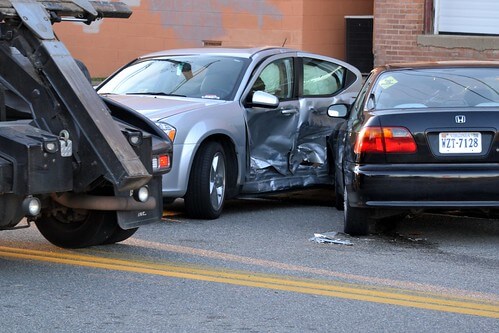- April 20, 2023
- Michigan Law
- Personal Injury

The rule of law governs your actions. When your actions harm another person or entity, negligence laws apply.
- A roommate may forget to turn off the coffeepot when leaving for work or classes.
- A neighbor has yet to take down the dead tree in the front yard near the sidewalk.
- The driver has not used the turn signal before changing lanes.
Acts or omissions may not seem to mean much. However, when you suffer harm, you can take action through the rules of law for negligence in Michigan.
At Goodman Acker, we use the theory of negligence to secure maximum compensation for our clients. Our legal team, which has a special emphasis on car accidents and personal injuries, is experienced in handling cases in Detroit, Dearborn, and the surrounding area. We explain how negligence laws in Michigan work.
What Is the Negligence Law in Michigan?
The theory of negligence is found in Chapter 600, Revised Judicature Act of 1961. Any claim must be filed within three years of the injury, as required by negligence law. Some exceptions require you to file sooner or allow you to file later.
Filing a claim at the right time is a crucial part of the law. To recover compensation, a personal injury lawyer or wrongful death attorney must establish that your loved one's injury or death was caused by another person's negligence. We summarize the four elements of negligence:
Duty of Care
The defendant must have a duty to avoid harming the plaintiff. Evidence may point to liability based on failure to show a duty of care:
- The defendant's action brought about a danger that resulted in the plaintiff's injury.
- The defendant proposed to safeguard the plaintiff but neglected to do so.
- The defendant was aware of, or should have been aware of, the fact that their inaction would cause injury to the plaintiff.
There are also legal relationships that produce an obligation without proof. For example:
- Health care providers and their patients
- Caregivers and their offspring
- Parents/legal guardians and children
- Business owners and customers
- Employers and employees
- Common carriers and passengers
- Innkeepers (hotels or motels) and guests.
Property owners, landlords, and tenants may have an obligation when they open the premises to the public or welcome visitors.
Acknowledging that there was a duty of care is the initial stage of this element. Pinpointing the duty of care is the second part. In a medical situation, duty of care differs depending on whether it's a primary care physician or a surgeon's duty of care.
Breach of Duty
The plaintiff must show the defendant failed to act as a reasonable person would have under the same or similar circumstances. A breach is committed if the defendant did not act in the same way a reasonable person would have in the same or similar conditions.
Causation
The plaintiff proves that the breach of duty directly caused the injury. What does this mean under the law? Sometimes the phrase used is "but for" -- meaning that the plaintiff would not have suffered harm if it were not for the defendant's actions. Proximate cause, more relaxed criteria, evaluates culpability of the defendant by determining whether the risk of the result was foreseeable.
Damages
The plaintiff has to prove damages -- financial losses, such as medical bills, lost wages, and damaged property, as well as compensation for pain, distress, and lack of enjoyment. In rare cases, the plaintiff may seek punitive damages. The amount of damages is established by using evidence like:
- Medical records
- Medical bills
- Pay stubs
- Letters from an employer
- Expert testimony
- Lay witness testimony
- Photos and video.
Keep your bills if someone has hurt you, monitor your lost wages, and document extra expenses. Capture the accident scene through photos or a drawing. Record all your memories while they are still fresh in your mind. Note down your injuries and any long-term effects, such as lasting pain, restricted movement, mental issues, and emotional distress.
How Do the Negligence Laws in Michigan Work?
It's time to comprehend how the theory of negligence functions with a solid understanding of the elements of Michigan's negligence laws.
Burden of Proof in Negligence Claims
Proving negligence is the tricky part. Several elements of the theory of negligence exist, and a preponderance of the evidence must prove each element. The evidence suggests that it is more probable and the defendant is liable for the related expenses. To reach a verdict, the jury must determine that the defendant is more than 50% responsible.
For some personal injury or wrongful death cases, the required burden of proof surpasses the preponderance of the evidence. When the plaintiff seeks compensation for exemplary damages (punitive damages), they must demonstrate that the defendant acted with malice, willfulness, and reckless disregard. Most cases require a preponderance of the evidence (50%+1).
Defenses to Negligence Claims
The accused can defend themselves, which is true in civil matters just as much as in criminal cases. Negligence claims can be (and will be) challenged by the defendant. In most cases, the insurance company is liable for covering the injury or death costs.
Insurance companies are for-profit entities, so they don't want to pay more than they must and will argue against the plaintiff’s claims. They may attempt to show that the plaintiff was partially responsible for the accident or had accepted the risk, or that someone else was at fault.
Partial Fault
Michigan followed the standard of contributory negligence until the 1970s, when the courts codified theory of comparative fault with M.C.L. § 600.2959. Partial fault does not prevent recovery. Insurance companies will attempt to build a case that you were at fault, and it could amount to 50% or more. Contact Goodman Acker at 248-665-8043 to schedule a free, no-obligation consultation.
Assumption of Risk
Does assuming the risk bar recovery? It can.
The assumption of the risk can serve as a defense to bar recovery if someone engages in dangerous activities or does not heed warnings and gets injured or killed.
The defendant must show:
- The plaintiff knew there was a risk of a specific type of injury.
- The injury suffered is like the known injury.
- The plaintiff voluntarily participated in the activity or used the product.
You usually acknowledge the risk involved by signing a waiver before taking part in the activity.
Superseding Cause
Does an intervening act bar recovery? Mostly no, but it could.
In certain cases, the defendant may assert that an intervening cause happened after their carelessness caused the harm and it furthered the injury. If the intervening event was foreseeable, the defendant is still liable. If an intervening event is not foreseeable, which is called a superseding cause, the defendant has a valid defense against being held liable.
Think about a car accident. The defendant runs a red light and hits your car. You may experience severe whiplash when your car comes to an abrupt stop, and another car crashes into your car. The second car striking your car is foreseeable in this situation.
But if a severe storm followed the impact and threw debris that injured the victim, resulting in serious, life-threatening wounds, the storm could be deemed a superseding cause, and the defendant could argue they were not responsible for those injuries.
Settlement Versus Trial
In lawsuits based on negligence, strong defenses exist. They are used to hinder a successful outcome. Many personal injury disputes are resolved prior to a court trial. But you still need a solid claim to thwart the defendant's efforts to deny liability and to ensure maximum compensation. Going to trial isn't always bad. What's worse is when you don't get the compensation you deserve. Then, you won't have the resources you need to recover.
Achieving success in a negligence case, whether it is settled or goes to court, requires more than a basic understanding of the law – you have to know how to use the laws to your benefit. Only those with the experience and determination of a Michigan personal injury attorney can do this.
Personal Injury Lawyers in Michigan with 150+ Years of Experience
At Goodman Acker, our team of experienced personal injury lawyers and car accident attorneys deeply understand how we can work for your benefit. We represent clients in Michigan via our remote services and brick-and-mortar offices in Detroit and Grand Rapids.

